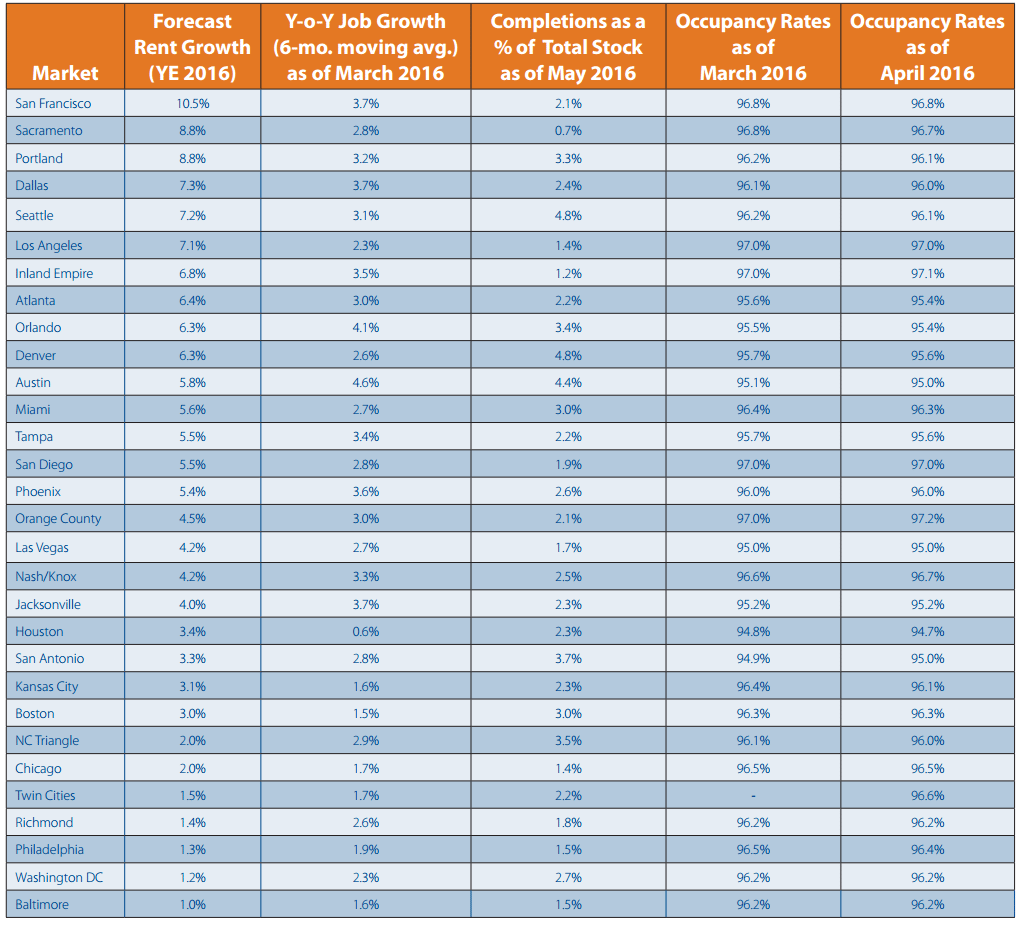- Nationwide rents grew 0.9 percent in May over the previous month and 6 percent on an annual basis.
- Occupancy rate in Los Angeles and the Inland Empire among the highest in the nation at 97 and 97.1 percent, respectively.
- By the end of 2016, rent is expected to grow 7.1 percent in L.A.
Rental prices continue to make strong strides, growing month by month and year by year. According to Yardi’s month survey of 119 metros throughout the nation, the U.S. saw a rent increase of 6 percent in May 2016 since May 2014 to another all-time high of $1,204.
The rental market is holding on, increasing about $10 over April, or 0.9 percent. Housing market forecasters are still banking on the transition of millennials turning from renters into homeowners, but the rental market is reaping the benefits in the meantime.

The national average rents include 119 markets tracked by Matrix.
Seattle, Sacramento and Portland posted the biggest gains, all above 11 percent. The three cities were pretty close to one another in gains and about 4 percent higher than the fourth highest city, Pheonix. Houston saw the smallest increase in year-over-year rent growth.
Miami and Las Vegas were the closest cities to neutral in terms of growth, with Miami posting slightly lower figures.

In the 12-month trailing average from April, national rents in all asset classes increased 6.3 percent. Mature markets like Washington D.C. and Richmond have remained toward the bottom end of the totem poll with rental growth, but Houston fell six spots in May. Washington D.C. remained in the same slot.
Miami dropped below the neutral line, falling three spots and putting it below the national average. Miami nearly flip-flopped with Las Vegas, which bumped up three spots.
Occupancy rates are historically high
Yardi Matrix expanded its coverage into occupancy rates throughout the nation on average and on a market basis. In April 2016, the occupancy rate was 96 percent over April 2015’s 95 percent.
The report found that even markets on the low end of the spectrum are doing well by historical standards. In the coming year, occupancy rates are expected to decline.

The occupancy rate in Los Angeles was reported among the highest of the 30 markets measured, at 97 percent, which remained unchanged on a monthly basis. Rental growth is expected to continue to increase and remain strong for the rest of the year.
The year-over-year job growth in L.A. isn’t astonding, but it’s around the average for all the cities, at 2.3 percent. In the nearby Inland Empire, job growth is strong at 3.5 percent. The occupancy rate increased slightly, by 0.1 percent, to 97.1 percent in May over April.
Rental growth overall continues to climb in the Inland Empire.

L.A.’s growth is currently about the same as the Inland Empire, making Southern California an incredibly strong rental market.

![]()













